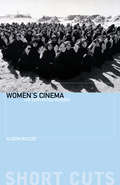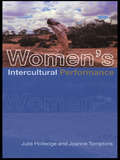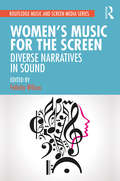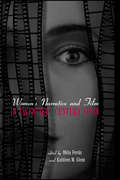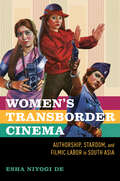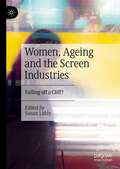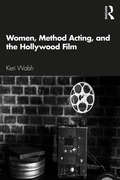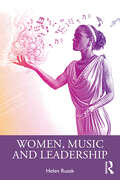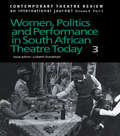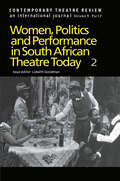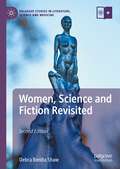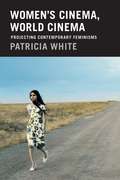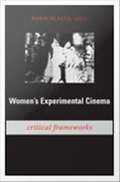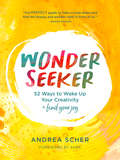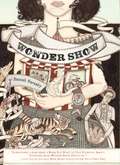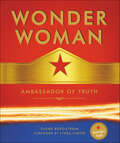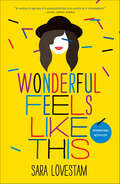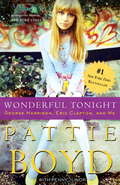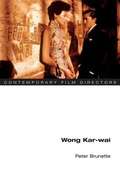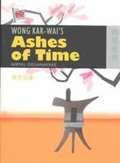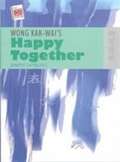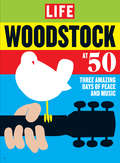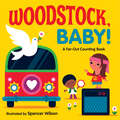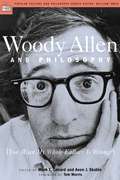- Table View
- List View
Women's Cinema: The Contested Screen (Short Cuts)
by Alison ButlerWomen's Cinema provides an introduction to critical debates around women's filmmaking and relates those debates to a variety of cinematic practices. Taking her cue from the groundbreaking theories of Claire Johnston, Alison Butler argues that women's cinema is a minor cinema that exists inside other cinemas, inflecting and contesting the codes and systems of the major cinematic traditions from within. Using canonical directors and less established names, ranging from Chantal Akerman to Moufida Tlatli, as examples, Butler argues that women's cinema is unified in spite of its diversity by the ways in which it reworks cinematic conventions.
Women's Intercultural Performance
by Julie Holledge Joanne TompkinsThis is the first in-depth examination of contemporary intercultural performance by women around the world. Contemporary feminist performance is explored in the contexts of current intercultural practices, theories and debates. Holledge and Tompkins provide ways of thinking about and analysing contemporary performance and representations of the performing, female, culturally-marked body. The book includes discussions of: * ritual performance by women from Central Australia and Korea * the cultural exchange of A Doll's House and Antigone * plays from Algeria, South Africa and Ghana * the work of the Takarazuka revue company * the market forces that govern the distribution of women and women's performance. This is an essential read for anyone studying or interested in women's performance.
Women's Music for the Screen: Diverse Narratives in Sound
by Felicity WilcoxWomen’s Music for the Screen: Diverse Narratives in Sound shines a long-overdue light on the works and lives of female-identifying screen composers. Bringing together composer profiles, exclusive interview excerpts, and industry case studies, this volume showcases their achievements and reflects on the systemic gender biases women have faced in an industry that has long excluded them. Across 16 essays, an international array of contributors present a wealth of research data, biographical content, and musical analysis of film, television, and video game scores to understand how the industry excludes women, the consequences of these deficits, and why such inequities persist – and to document women’s rich contributions to screen music in diverse styles and genres.The chapters amplify the voices of women composers including Bebe Barron, Delia Derbyshire, Wendy Carlos, Anne Dudley, Rachel Portman, Hildur Guðnadóttir, Mica Levi, Winifred Phillips, and more. From the mid-twentieth century to the present, and from classic Hollywood scores to pioneering electronic music, these are the stories and achievements of the women who have managed to forge successful careers in a male-dominated arena. Suitable for researchers, educators, and students alike, Women’s Music for the Screen urges the screen music industry to consider these sounds and stories in a way it hasn’t before: as voices that more accurately reflect the world we all share.
Women's Narrative and Film in 20th Century Spain
by Kathleen GlennWomen's Narrative and Film in 20th Century Spain examines the development of the feminine cultural tradition in spain and how this tradition reshaped and defined a Spanish national identity. Each chapter focuses on representation of autobiography, alienation and exile, marginality, race, eroticism, political activism, and feminism within the ever-changing nationalisms in different regions of Spain. The book describes how concepts of gender and difference shaped the individual, collective, and national identities of Spanish women and significantly modified the meaning and representation of female sexuality.
Women's Transborder Cinema: Authorship, Stardom, and Filmic Labor in South Asia (Women’s Media History Now!)
by Esha Niyogi DeCan we write women’s authorial roles into the history of industrial cinema in South Asia? How can we understand women’s creative authority and access to the film business infrastructure in this postcolonial region? Esha Niyogi De draws on rare archival and oral sources to explore these questions from a uniquely comparative perspective, delving into examples of women holding influential positions as stars, directors, and producers across the film industries in India, Pakistan, and Bangladesh. De uses film tropes to examine the ways women directors and film entrepreneurs claim creative control within the contexts of anti-colonial nationalism and global capitalism. The region’s fictional cinemas have become staging grounds for postcolonialism, with colonial and local hierarchies merged into new imperial formations. De’s analysis shows how the gendered intersections of inequity and opportunity shape women’s fiction filmmaking while illuminating the impact of state and market formations on the process. Innovative and essential, Women’s Transborder Cinema examines the works of South Asia’s women filmmakers from a regional perspective.
Women, Ageing and the Screen Industries: Falling off a Cliff?
by Susan LiddyThis book explores the challenges facing women from their mid-forties as they attempt to build/maintain careers in the screen industries. Essays are concerned with the intersection of gender and age on screen and behind the camera and how that can create a ‘double jeopardy’. Existing research in this area has been primarily directed to onscreen representation. Female actors, with notable exceptions, struggle to get screen time and expansive roles as they age. Behind the camera, women 45+ also face challenges and roadblocks; to date, less attention has been directed to this group. The cross-cultural research in this collection offers an analysis of representation, on and off screen, touching on film, television, streaming services and film festivals. It includes an exploration of gendered ageism, age bias and stereotyping. It also highlights the achievements of mature female practitioners who, in their work and working lives, embody a resistance to restrictive cultural discourses about ageing women.
Women, Method Acting, and the Hollywood Film
by Keri WalshWomen, Method Acting, and the Hollywood Film is the first study dedicated to understanding the work of female Method actors on film. While Method acting on film has typically been associated with the explosive machismo of actors like Marlon Brando and Robert De Niro, this book explores an alternate tradition within the Method—the work that women from the Actors Studio did in Hollywood. Covering the period from the end of the Second World War until the 1970s, this study shows how the women associated with the Actors Studio increasingly used Method acting in ways that were compatible with their burgeoning feminist political commitments and developed a style of feminist Method acting. The book examines the complex intersection of Method acting, sexuality, and gender by analyzing performances such as Kim Hunter’s in A Streetcar Named Desire, Julie Harris’s in The Member of the Wedding, Shelley Winters’s in The Big Knife, Geraldine Page’s in Sweet Bird of Youth, and Jane Fonda’s in Coming Home. Challenging the longstanding assumption that Method acting’s approaches were harmful to women and incompatible with feminism, this book argues that some of Hollywood’s most interesting female actors, and leading feminists, emerged from the Actors Studio in the period between the 1950s and the 1970s. Written for students and scholars of Film Studies, Cultural Studies, Theatre and Performance Studies, and Gender Studies, Women, Method Acting, and the Hollywood Film reshapes the way we think of a central strain in American screen acting, and in doing so, allows women a new stake in that tradition.
Women, Music and Leadership
by Helen RusakWomen, Music and Leadership offers a wide-ranging survey of women in musical leadership and their experiences, highlighting women’s achievements and considering how they negotiate the challenges of the leadership space in music. Women have always participated in music as performers, teachers, composers and professionals, but remain underrepresented in leadership positions. Covering women’s leadership across a wide variety of roles and musical genres, this book addresses women in classical music, gospel, blues, jazz, popular music, electronic music and non-Western musical contexts, and considers women working as composers, as conductors, and in music management and the music business. Each chapter includes several case studies of women’s careers, exploring their groundbreaking contributions to music and the challenges they faced as leaders. Connecting management theory and leadership research with feminist musicology, this book paints a new picture of women’s major contributions as leaders in music and their ongoing struggles for equity. It will be relevant to students and scholars in arts and music management, as well as all those studying music, gender or leadership, and women music professionals.
Women, Politics and Performance in South African Theatre Today Vol 3: Volume 3 (Contemporary Theatre Review Ser. #Vols. 9, Pts. 3.)
by Lizbeth GoodmanThis title available in eBook format. Click here for more information.Visit our eBookstore at: www.ebookstore.tandf.co.uk.
Women, Politics and Performance in South African Theatre Today: Volume 2
by Goodman LFirst Published in 1999. Routledge is an imprint of Taylor & Francis, an informa company.
Women, Science and Fiction Revisited (Palgrave Studies in Literature, Science and Medicine)
by Debra Benita ShawWomen, Science and Fiction Revisited is an analysis of selected science fiction novels and short stories written by women over the past hundred years from the point of view of their engagement with how science writes the world. Beginning with Charlotte Perkins Gilman's Herland (1918) and ending with N K Jemisin's The City We Became (2020), Debra Benita Shaw explores the re-imagination of gender and race that characterises women's literary crafting of new worlds. Along the way, she introduces new readings of classics like Ursula Le Guin's The Left Hand of Darkness and Margaret Atwood's The Handmaid's Tale, examining the original novels in the context of their adaptation to new media formats in the twenty-first century. What this reveals is a consistent preoccupation with how scientific ideas can be employed to challenge existing social structures and argue for change.
Women’s Cinema, World Cinema: Projecting Contemporary Feminisms
by Patricia WhiteIn Women's Cinema, World Cinema, Patricia White explores the dynamic intersection of feminism and film in the twenty-first century by highlighting the work of a new generation of women directors from around the world: Samira and Hana Makhmalbaf, Nadine Labaki, Zero Chou, Jasmila Zbanic, and Claudia Llosa, among others. The emergence of a globalized network of film festivals has enabled these young directors to make and circulate films that are changing the aesthetics and politics of art house cinema and challenging feminist genealogies. Extending formal analysis to the production and reception contexts of a variety of feature films, White explores how women filmmakers are both implicated in and critique gendered concepts of authorship, taste, genre, national identity, and human rights. Women's Cinema, World Cinema revitalizes feminist film studies as it argues for an alternative vision of global media culture.
Women’s Experimental Cinema: Critical Frameworks
by Noel Carroll Robin Blaetz Christine Holmlund Paul Arthur Melissa RagonaWomen's Experimental Cinema provides lively introductions to the work of fifteen avant-garde women filmmakers, some of whom worked as early as the 1950s and many of whom are still working today. In each essay in this collection, a leading film scholar considers a single filmmaker, supplying biographical information, analyzing various influences on her work, examining the development of her corpus, and interpreting a significant number of individual films. The essays rescue the work of critically neglected but influential women filmmakers for teaching, further study, and, hopefully, restoration and preservation. Just as importantly, they enrich the understanding of feminism in cinema and expand the terrain of film history, particularly the history of the American avant-garde.The contributors examine the work of Marie Menken, Joyce Wieland, Gunvor Nelson, Yvonne Rainer, Carolee Schneemann, Barbara Rubin, Amy Greenfield, Barbara Hammer, Chick Strand, Marjorie Keller, Leslie Thornton, Abigail Child, Peggy Ahwesh, Su Friedrich, and Cheryl Dunye. The essays highlight the diversity in these filmmakers' forms and methods, covering topics such as how Menken used film as a way to rethink the transition from abstract expressionism to Pop Art in the 1950s and 1960s, how Rubin both objectified the body and investigated the filmic apparatus that enabled that objectification in her film Christmas on Earth (1963), and how Dunye uses film to explore her own identity as a black lesbian artist. At the same time, the essays reveal commonalities, including a tendency toward documentary rather than fiction and a commitment to nonhierarchical, collaborative production practices. The volume's final essay focuses explicitly on teaching women's experimental films, addressing logistical concerns (how to acquire the films and secure proper viewing spaces) and extending the range of the book by suggesting alternative films for classroom use.Contributors. Paul Arthur, Robin Blaetz, Noël Carroll, Janet Cutler, Mary Ann Doane, Robert A. Haller, Chris Holmlund, Chuck Kleinhans, Scott MacDonald, Kathleen McHugh, Ara Osterweil, Maria Pramaggiore, Melissa Ragona, Kathryn Ramey, M. M. Serra, Maureen Turim, William C. Wees
Wonder Seeker: 52 Ways to Wake Up Your Creativity and Find Your Joy
by Andrea Scher“The PERFECT guide to help us slow down and find the beauty and wonder right in front of us.”—Brené BrownSpark your sense of wonder and lift your spirits with this collection of fun, creative activities and ideas to help cultivate daily joy, illustrated with full-color photographs, artful watercolors, and inspiring stories. Do you remember the first time you saw the night sky blanketed in stars? Or that feeling of magic when you found your first sand dollar on the beach? Maybe it’s when you rode a bicycle for the first time and it felt like flying. Wonder taps us into the joy of being alive, opening our eyes to how much beauty there is in the world and how life can surprise us in the most delightful of ways. Wonder Seeker reminds us that no one is too busy (or too old) to experience daily gratitude and delight. Filled with 52 fun, easy, and incredibly creative prompts and activities, this guide to joy helps us to step out of our ordinary lives, even for just a moment or two each day, to witness the magic all around us. Andrea provides simple practices that bridge creativity and mindfulness and allow the imagination to play. These activities can be done anywhere and can be enjoyed solo, or with friends, family, and even strangers. The fun activities and suggestions in Wonder Seeker include:Taking a curiosity walkWriting a banana love noteGoing on a wonder date Writing a paint chip poem Hosting a bubble flash mobMaking a wish treeChoosing a superhero nameAnd much, much more!As Andrea makes clear, you don’t need to be an artist or consider yourself “creative.” All you need is an open heart and a clear intention to find wonder and awe. It will renew your creative spirit, remind you of the marvels around you, and make your soul sing. Reclaim your inner happiness—let Wonder Seeker show you how.
Wonder Show
by Hannah BarnabyLadies and gentlemen, boys and girls, step inside Mosco's Traveling Wonder Show, amenagerie of human curiosities and misfits guaranteed to astound and amaze!But perhaps the strangest act of Mosco's display is Portia Remini, a normal amongthe freaks, on the run from McGreavy's Home for Wayward Girls, where Misterwatches and waits. He said he would always find Portia, that she could never leave.Free at last, Portia begins a new life on the bally, seeking answers about her father'sdisappearance. Will she find him before Mister finds her? It's a story for the ages, andlike everyone who enters the Wonder Show, Portia will never be the same.
Wonder Woman: Ambassador of Truth
by Signe BergstromA gorgeous, authorized celebration of one of the most popular and enduring Super Heroes of all time—Wonder Woman—that chronicles the life and times of this pop-culture phenomenon and image of women’s strength and power, from her origins and role as a founding member of the Justice League to her evolution in television and film."As lovely as Aphrodite—as wise as Athena—with the speed of Mercury and the strength of Hercules—she is known only as Wonder Woman, but who she is, or whence she came, nobody knows!"—All-Star Comics #8 (December 1941-January 1942)Created by William Moulton Marston and introduced at the beginning of America’s involvement in World War II, Wonder Woman—the fierce warrior and diplomat armed with bulletproof Bracelets of Victory, a golden tiara, and a Lasso of Truth—has been a pop-culture icon and one of the most enduring symbols of feminism for more than seventy-five years. Wonder Woman: Ambassador of Truth now tells the complete illustrated story of this iconic character’s creative journey. Signe Bergstrom examines Wonder Woman’s diverse media representations from her wartime comic book origins to today’s feature films, and explores the impact she has had on women’s rights and empowerment and the fight for peace, justice, and equality across the globe.Wonder Woman: Ambassador of Truth brings together a breathtaking collage of images—from the DC comic books, the 1970s-era television show starring Lynda Carter, her numerous animated appearances, the June 2017 Wonder Woman feature film called "the best DC universe film yet", and the November 2017 film Justice League. Fully authorized by Warner Bros. Consumer Products, this lush full-color compendium features inserts and exclusive interactives, and illuminating interviews and anecdotes from key artists, writers, and personalities involved in bringing Wonder Woman to life across the years.WONDER WOMAN and all related characters and elements are trademarks of and © DC Comics. (s17)
Wonderful Feels Like This
by Sara LövestamSara Lovestam's Wonderful Feels Like This is “a coming-of-age tale of a young artist and is as soulful as it is triumphant” (SLJ) that celebrates being a little bit odd, finding your people, and the power of music to connect usFor Steffi, going to school everyday is an exercise in survival. She's never fit in with any of the groups at school, and she's viciously teased by the other girls in her class. The only way she escapes is through her music—especially jazz music.When Steffi hears her favorite jazz song playing through an open window of a retirement home on her walk home from school, she decides to go in and introduce herself.The old man playing her favorite song is Alvar. When Alvar was a teenager in World War II Sweden, he dreamed of being in a real jazz band. Then and now, Alvar's escape is music—especially jazz music. Through their unconventional but powerful friendship, Steffi comes to realize that she won't always be stuck and lonely in her town. She can go to music school in Stockholm. She can be a real musician. She can be a jitterbug, just like Alvar.But how can Steffi convince her parents to let her go to Stockholm to audition? And how it that Steffi's school, the retirement home, the music, and even Steffi's worst bully are somehow all connected to Alvar? Can it be that the people least like us are the ones we need to help us tell our own stories?"Sensitive and deeply moving: outstanding." —Kirkus, starred review"Empathy, identity, and the transformative power of music bind this tale of an atypical friendship between a teenage outcast and a jazz musician."—Publishers Weekly, starred review
Wonderful Tonight: George Harrison, Eric Clapton, and Me
by Pattie Boyd Penny JunorFor the first time, rock music's most famous muse tells her incredible story Pattie Boyd, former wife of both George Harrison and Eric Clapton, finally breaks a forty-year silence and tells the story of how she found herself bound to two of the most addictive, promiscuous musical geniuses of the twentieth century and became the most legendary muse in the history of rock and roll. The woman who inspired Harrison's song "Something" and Clapton's anthem "Layla," Pattie Boyd has written a book that is rich and raw, funny and heartbreaking--and totally honest.
Wong Kar-wai (Contemporary Film Directors)
by Peter BrunetteWong Kar-Wai traces this immensely exciting director's perennial themes of time, love, and loss, and examines the political implications of his films, especially concerning the handover of former British colony Hong Kong to the People's Republic of China. This book is the first in any language to cover all of Wong's work, from his first film, As Tears Go By, to his most recent, the still unreleased 2046. It also includes his best?known, highly honored films, Chungking Express, Happy Together, and above all, In the Mood for Love. Most importantly, Peter Brunette describes the ways in which Wong's supremely visual films attempt to create a new form of cinema by relying on stunning, suggestive visual images and audio tracks to tell their story, rather than on traditional notions of character, dialogue, and plot. The question of Wong Kar-wai's use of genre film techniques in art films is also explored in depth.
Wong Kar-wai's Ashes of Time
by Wimal Dissanayake'Ashes of Time,' by the internationally acclaimed director Wong Kar-wai, has been considered to be one of the most complex and self-reflexive of Hong Kong films. Loosely based on the stories by renowned martial arts novelist Jin Yong, Wong Kar-wai has created a very different kind of martial arts film, which invites close and sustained study.This book presents the nature and significance of Ashes of Time, and the reasons for its being regarded as a landmark in Hong Kong cinema. Placing the film in historical and cultural context, Dissanayake discusses its vision, imagery, visual style, and narrative structure. In particular, he focuses on the themes of mourning, confession, fantasy, and kung fu movies, which enable the reader to gain a deeper and more comprehensive understanding of the film.
Wong Kar-wai's Happy Together
by Jeremy TamblingWong Kar-wai's controversial film, 'Happy Together,' was released in Hong Kong just before the handover of power in 1997. The film shows two Chinese gay men in Buenos Aires and reflects on Hong Kong's past and future by probing masculinity, aggression, identity, and homosexuality. It also gives a reading of Latin America, perhaps as an allegory of Hong Kong as another post-colonial society. Examining one single, memorable, and beautiful film, but placing it in the context of other films by Wong Kar-wai and other Hong Kong directors, this book illustrates the depth, as well as the spectacle and action, that characterizes Hong Kong cinema. Tambling investigates the possibility of seeing Happy Together in terms of 'national allegory', as Fredric Jameson suggests Third World texts should be seen. Alternatively, he emphasizes the fragmentary nature of the film by discussing both its images and its narrative in the light of Borges and Manuel Puig. He also looks at the film's relation to the American road movie and to the history of the tango. He poses questions how emotions are presented in the film (is this a 'nostalgia film'?); whether the masculinity in it should be seen negatively or as signs of a new hopefulness about Hong Kong's future; and whether the film indicates new ways of thinking of gender relationships or sexuality.
Woodlanders Begin
by Irene SchultzWhat family solves mysteries... has adventures all over the world... and loves oatmeal cookies? The children (Sammy, 10, sister Kathy, 13, brother Bill, 14, best friend Dave, 16) all lost their parents, but with their dog Mop have made their OWN family with Mrs. Tandy. Why are they called the Woodlanders? Because they live in a big house in the Bluff Lake woods on Woodland Street! Together they find fun, mystery, and adventure.
Woodstock, Baby!: A Far-Out Counting Book
by Spencer WilsonA far-out counting board book celebrating the peace and love of Woodstock!Little rockers will love counting everything from peace signs and guitars to bell-bottoms and rock bands in this out-of-sight board book with simple rhyming words and groovy illustrations. It's the perfect gift for every little flower child and music fan.
Woody Allen and Philosophy: You Mean My Whole Fallacy Is Wrong?
by Mark T. Conard Aeon J. SkobleOne need not be a philosophy major to appreciate Woody Allen's take on life's big questions. Conard and Skoble collect 15 views on such themes in his films as philosophical commentary.
